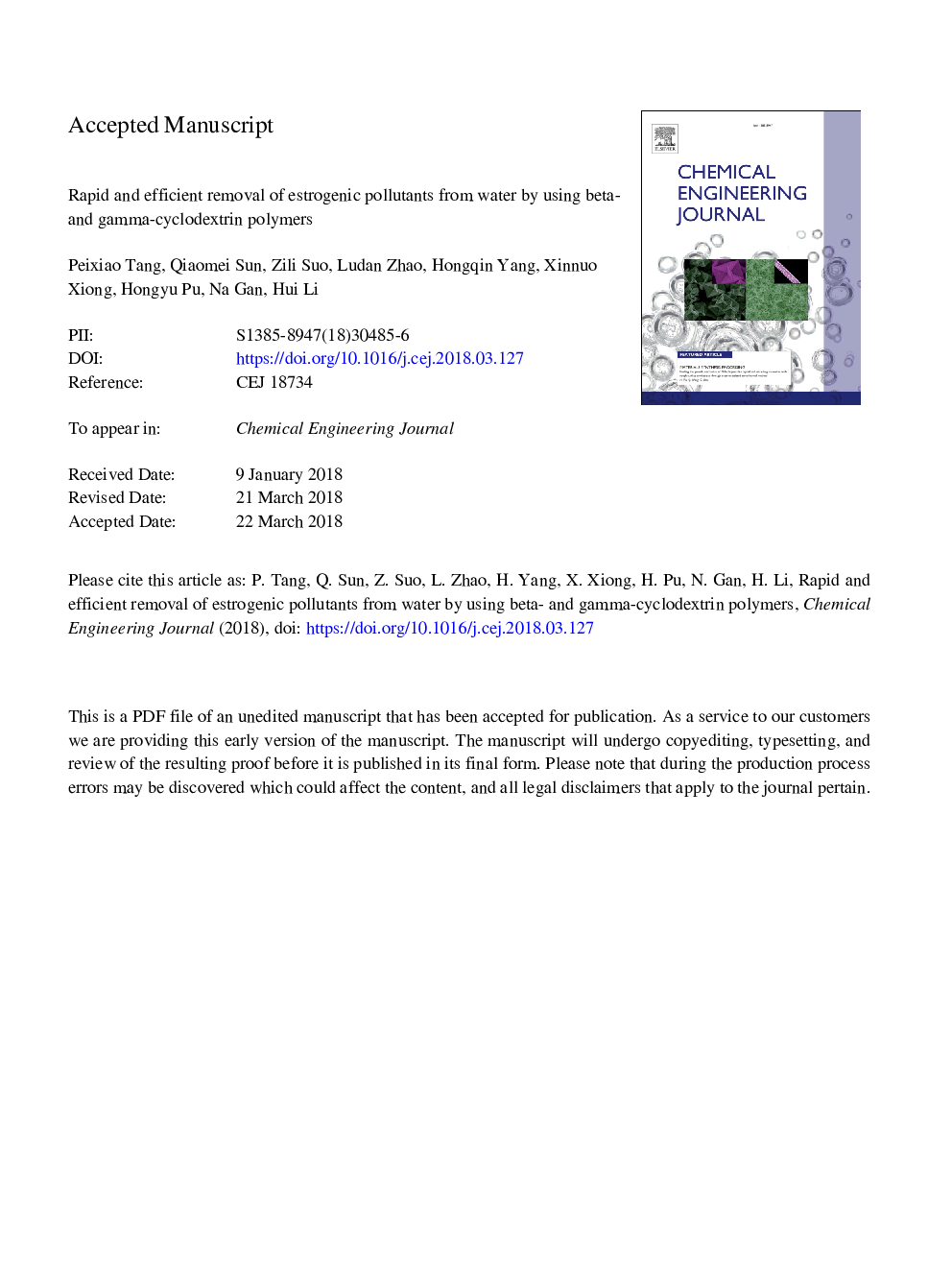| Article ID | Journal | Published Year | Pages | File Type |
|---|---|---|---|---|
| 6579560 | Chemical Engineering Journal | 2018 | 30 Pages |
Abstract
The existence of estrogenic hormones in water systems has a potential adverse impact on the environment and public health. Cyclodextrin (CD) can encapsulate small molecules to form host-guest complexes with high stability; thus, it is being applied to remove pollutants in water systems. Beta-cyclodextrin (β-CD) and gamma-cyclodextrin (γ-CD) have different cavity diameters, which directly affect their inclusion ability. Therefore, it's predicted that there may be a certain difference in the adsorption performance of β-CD- and γ-CD-based polymers. In this study, mesoporous polymers of β-CD and γ-CD were prepared, and their adsorption efficiency on estrogen pollutants, including 17β-estradiol (E2), 17α-ethinylestradiol (EE2), and bisphenol A (BPA), at environmentally relevant concentrations was investigated. The results indicated that both β-CD polymer (β-CDP) and γ-CD polymer (γ-CDP) exhibited rapid and efficient removal of the three estrogens and maintained high performance after regeneration. The adsorption processes fitted well with the pseudo-second-order and Langmuir isothermal adsorption model. γ-CDP exhibited better adsorption ability on E2 and EE2 than β-CDP. These phenomena were further clarified by the inclusion mechanism between CDs and estrogens gained from Job's plot and molecular docking. β-CD can only embed one estrogen molecule in its cavity, whereas γ-CD can embed two E2 or EE2 molecules due to its larger cavity. In addition, both β-CDP and γ-CDP can efficiently remove other estrogens such as estrone, estriol, diethylstilbestrol, octyl phenol, and nonylphenol. This study showed the potential of CD polymers, especially γ-CDP, in rapidly and efficiently removing estrogen pollutants.
Related Topics
Physical Sciences and Engineering
Chemical Engineering
Chemical Engineering (General)
Authors
Peixiao Tang, Qiaomei Sun, Zili Suo, Ludan Zhao, Hongqin Yang, Xinnuo Xiong, Hongyu Pu, Na Gan, Hui Li,
